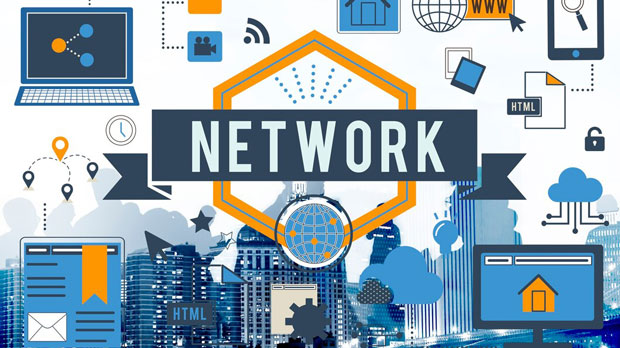How are IP proxy address pricing trends changing?
In recent years, the pricing of ip proxy addresses has witnessed notable fluctuations due to various factors, including technological advancements, market demand, and geopolitical events. As businesses increasingly rely on ip proxies for activities such as web scraping, data aggregation, and enhanced security, understanding the price trends is crucial for making informed decisions. The rise in demand for anonymity, location-based services, and the necessity of bypassing geo-restrictions has further contributed to these shifts. This article will explore the dynamics behind the pricing changes and analyze what factors influence the cost of IP proxy addresses. Understanding the Basics of IP Proxy AddressesBefore delving into the price trends, it is important to understand what IP proxy addresses are and how they function. An IP proxy is an intermediary server that separates end users from the websites they browse. By using a proxy, an individual's real IP address is concealed, and a different IP address is displayed to the target website. This ensures anonymity and allows users to access content from different geographical locations or bypass regional restrictions.The demand for IP proxies has been steadily increasing, especially as businesses and individuals seek privacy and security online. These proxies are employed in a variety of industries, including digital marketing, web scraping, cybersecurity, and e-commerce. As the uses of IP proxies evolve, the pricing models also shift to meet the changing needs of customers.Factors Influencing the Price of IP Proxy AddressesSeveral key factors drive the cost of IP proxy addresses. These factors include technological improvements, the type of IP proxy, geographical location, and the amount of demand in specific markets. Understanding each of these components is essential to gaining insight into the pricing dynamics.1. Technological AdvancementsThe evolution of technology has directly impacted the pricing of IP proxy addresses. In the early days, IP proxies were often basic, static, and had limited functionality. However, as advancements in technology have led to the development of more sophisticated proxies—such as residential proxies, mobile proxies, and rotating proxies—the price has also increased.Residential proxies, for instance, are more expensive than datacenter proxies because they use real IP addresses provided by Internet Service Providers (ISPs). These proxies are harder to detect and block, making them highly valuable for tasks such as web scraping and accessing region-specific content. The higher cost of residential proxies reflects their increased reliability and versatility.2. Demand and Market TrendsThe growing demand for IP proxies is another key factor that influences pricing. As businesses increasingly rely on proxies for data collection, competitor analysis, and digital marketing strategies, the demand for high-quality proxies has surged. Moreover, the rise of online privacy concerns and the need for anonymity in browsing has expanded the consumer base, including individuals and small businesses seeking to protect their online identity.The rise in demand, coupled with the limited supply of certain types of proxies, has created a competitive market. When demand exceeds supply, the prices tend to rise. This trend is evident in certain markets, such as those that require access to specific countries or regions where proxies are in limited supply.3. Geographical LocationThe geographical location of the proxy server plays a crucial role in determining its cost. Proxies that provide IP addresses from certain countries or regions, especially those with a higher demand for privacy and security, are generally more expensive. For instance, proxies that offer IP addresses from countries with strong privacy laws, such as Switzerland, tend to be priced higher due to their perceived security and anonymity.On the other hand, proxies from regions with less demand for such services, or those with less stringent regulations, are often priced lower. These regional price differences are a direct result of market demand, local regulations, and the supply of proxies in each region.4. Proxy Types and FeaturesThe type of IP proxy a customer requires significantly affects the price. There are several categories of proxies available, including:- Datacenter Proxies: These are the most affordable and commonly used proxies, as they originate from data centers and not residential ISPs. They are typically fast but can be easily detected and blocked by websites that recognize non-residential IP addresses.- Residential Proxies: As mentioned earlier, residential proxies use real IP addresses provided by ISPs and are generally more expensive. They offer a higher level of anonymity and are harder to detect, making them ideal for tasks that require discretion.- Mobile Proxies: These proxies are associated with mobile devices and use mobile network IPs, offering high levels of anonymity and are often used for mobile-based tasks such as app testing. They are usually priced higher due to their specialized nature.- Rotating Proxies: These proxies rotate through different IP addresses, allowing users to access websites with multiple IPs. While they offer greater flexibility and anonymity, they are also typically more expensive due to their complexity and enhanced capabilities.Each of these types has distinct advantages and is priced according to the features it provides, with specialized proxies like residential or mobile proxies commanding a higher price.Price Fluctuations Based on UsageAnother important consideration when analyzing price trends is how the intended usage of the proxies can affect their cost. For businesses requiring a large number of proxies for extensive tasks such as data scraping or competitor analysis, prices will often be higher due to the increased volume of IP addresses needed. In contrast, smaller-scale usage, such as occasional anonymity for personal browsing, typically incurs lower costs.Providers often offer different pricing models, such as pay-as-you-go, monthly subscriptions, or bulk pricing discounts, depending on the usage. The flexibility of these models allows businesses and individuals to choose pricing plans that best align with their needs.Long-Term Price Trends and ProjectionsAs IP proxies become an integral tool for digital operations, the price is expected to continue evolving. In the short term, the demand for higher-quality proxies, especially residential and mobile proxies, is likely to drive prices upward. The need for businesses to gather data anonymously and access geo-restricted content will fuel this growth. However, as competition in the market increases and more providers enter the space, there may be a stabilizing effect on prices over time.In the long term, technological innovations, such as the use of AI and machine learning for proxy management, could further influence pricing dynamics. While these advancements might improve the efficiency of proxy services, they could also lead to cost reductions for users who leverage these technologies to optimize their proxy usage.Conclusion: What to Expect in the FutureThe price of IP proxy addresses is influenced by a multitude of factors, ranging from technological developments to market demand and regional variations. As the market for proxies continues to grow, businesses and individuals alike must stay informed about the changes in pricing trends. Whether seeking proxies for privacy, data gathering, or bypassing geo-restrictions, understanding these trends will enable customers to make better purchasing decisions that align with their needs.In the coming years, as the demand for higher-quality, more secure proxies increases, prices may continue to rise. However, increased competition and technological advances could lead to more pricing flexibility, making IP proxies more accessible to a wider range of users. By understanding the factors influencing these prices, customers can plan and budget effectively to optimize their use of IP proxy addresses in the future.
2025-02-07

























































